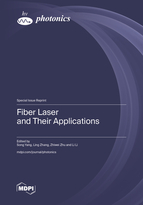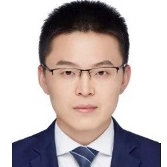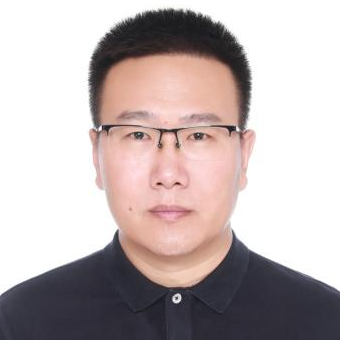Fiber Laser and Their Applications
A special issue of Photonics (ISSN 2304-6732).
Deadline for manuscript submissions: closed (31 May 2023) | Viewed by 17690
Special Issue Editors
Interests: fiber laser; mode-locking; Q-switching; nonlinear optics; nano/micro-fabrication; laser imaging; optical sensor
Special Issues, Collections and Topics in MDPI journals
Interests: mode-locking; nonlinear optics; low-dimensional material; 3D printing; micro/nano-structure fabrication
Special Issues, Collections and Topics in MDPI journals
Interests: fiber laser; mode locking; nonlinear optics; optical frequency combs; dual-comb spectroscopy
Interests: utrafast laser dynamics; mode-locked lasers; infrared lasers and nonlinear optics; terahertz photonics; terahertz device physics; terahertz wave manipulation; terahertz passive and active devices; terahertz detection and communication; terahertz metasurface; terahertz holography
Special Issue Information
Dear Colleagues,
Fiber lasers are key components that have attracted wide attention owing to their advantages such as compact structure, high peak power, high efficiency, and excellent beam quality. Nowadays, many efforts have been made to improve the emission performance of the optical fiber laser, including its pulse duration, peak power, stability, etc. Furthermore, high-peak power fiber lasers have been adopted as an edge tool in both research and industry fields, such as nonlinear optics, optical imaging, laser processing, 3D printing, etc.
We are pleased to invite you to submit your original research articles and reviews to this Special Issue, "Fiber Laser and Their Applications," which will focus on the recent advances in both ultrafast optical fiber lasers and their applications. Research areas may include (but are not limited to) the following:
- Mode-locked fiber laser.
- Q-switched fiber laser.
- High-power fiber laser.
- Advanced optical material.
- Laser imaging.
- Micro/nano structure fabrication.
We look forward to receiving your contributions.
Dr. Song Yang
Dr. Ling Zhang
Dr. Zhiwei Zhu
Prof. Dr. Li Li
Guest Editors
Manuscript Submission Information
Manuscripts should be submitted online at www.mdpi.com by registering and logging in to this website. Once you are registered, click here to go to the submission form. Manuscripts can be submitted until the deadline. All submissions that pass pre-check are peer-reviewed. Accepted papers will be published continuously in the journal (as soon as accepted) and will be listed together on the special issue website. Research articles, review articles as well as short communications are invited. For planned papers, a title and short abstract (about 100 words) can be sent to the Editorial Office for announcement on this website.
Submitted manuscripts should not have been published previously, nor be under consideration for publication elsewhere (except conference proceedings papers). All manuscripts are thoroughly refereed through a single-blind peer-review process. A guide for authors and other relevant information for submission of manuscripts is available on the Instructions for Authors page. Photonics is an international peer-reviewed open access monthly journal published by MDPI.
Please visit the Instructions for Authors page before submitting a manuscript. The Article Processing Charge (APC) for publication in this open access journal is 2400 CHF (Swiss Francs). Submitted papers should be well formatted and use good English. Authors may use MDPI's English editing service prior to publication or during author revisions.
Keywords
- fiber laser
- mode-locking
- Q-switching
- optical imaging
- micro/nano structure fabricating









